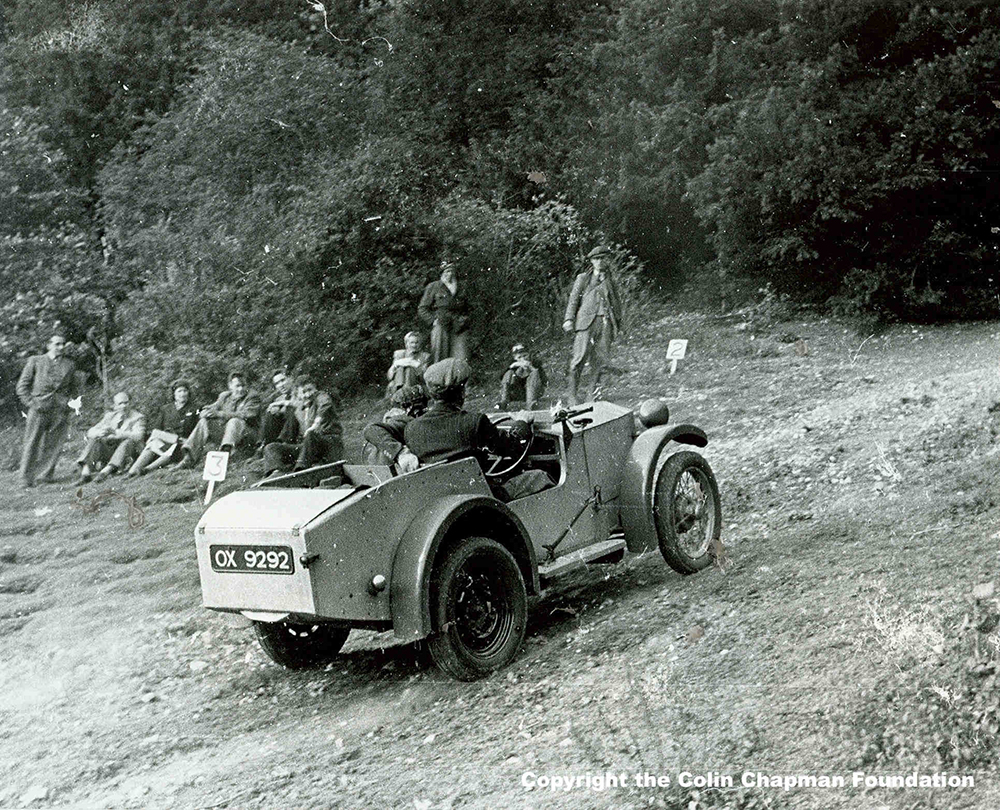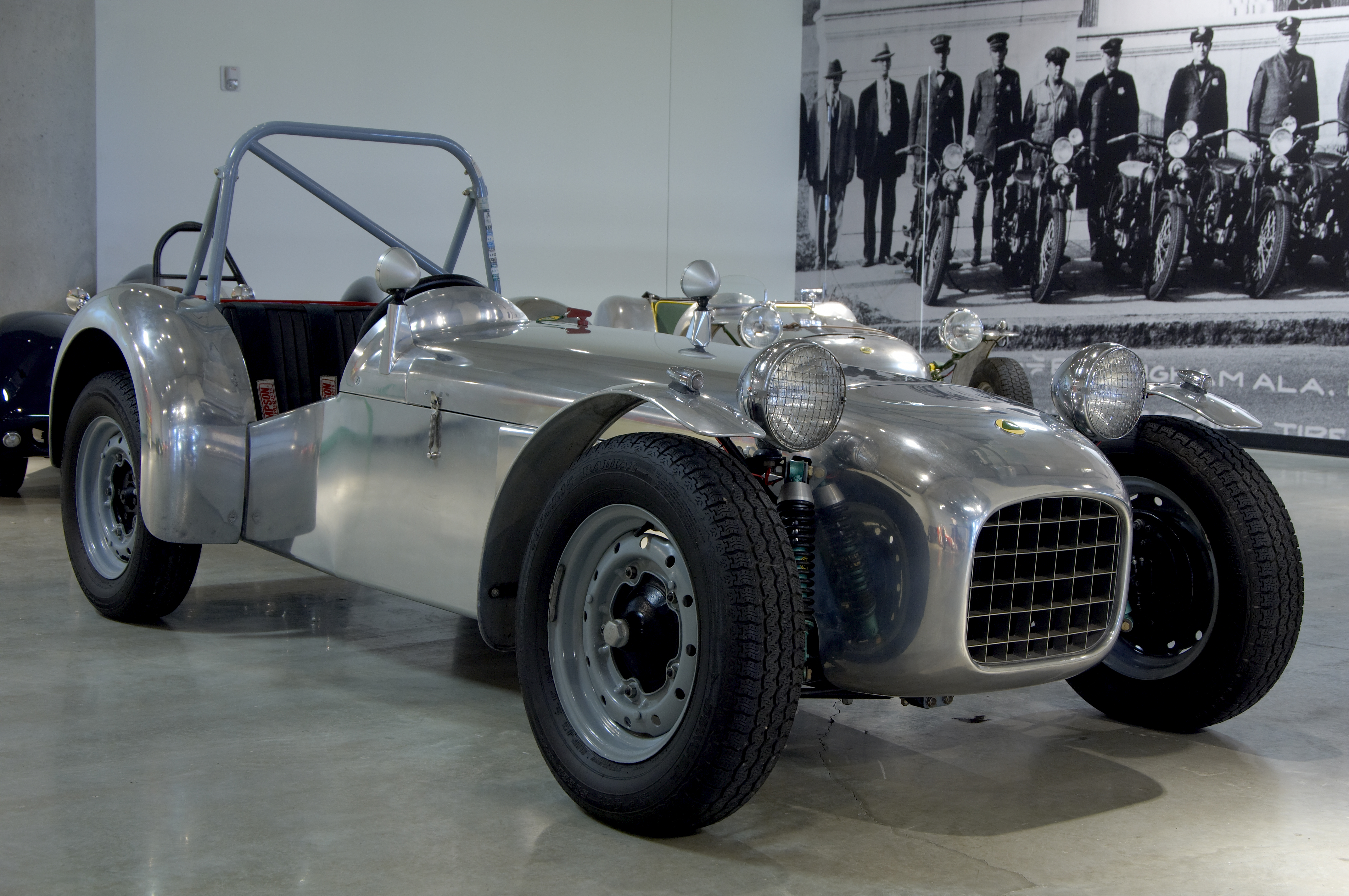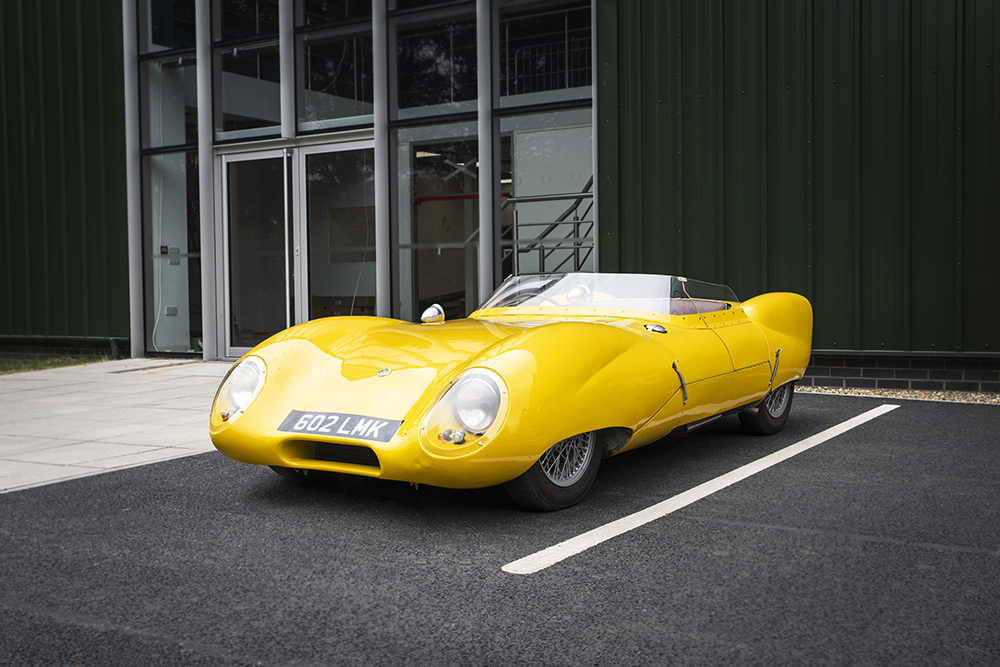The intertwined story of Caterham and the Lotus Seven
This year marks the 50th anniversary of the diminutive and usually sideways Caterham Seven. And while that’s a milestone worthy of celebration in anyone’s calendar, the truth is this lightweight historical throwback is actually much older, having started out life as a mere plaything of one of the most talented automotive engineers on the planet – Lotus founder Colin Chapman.
Chapman had a thing for muddy hillclimbs, and as he whiled away the time in-between studying for his engineering degree, he took the somewhat humble innards of an Austin Seven and added a new body to create his own trials car, the Lotus Mark I.

Lotus Mark I Credit: Colin Chapman Foundation
As his engineering expertise grew, so did his competitive spirit. The car evolved into the Lotus Mark II, which rather embarrassed a Bugatti Type 37 at Silverstone by daring to claim the chequered flag before it, despite being something of a home-brew special.
The Lotus Mark III and IV were similarly successful, the latter so much so that Chapman was able to move into dedicated premises and establish Lotus Engineering, building cars for privateer racers. The Mark V, it is believed, never left the drawing board, but the Mark VI established many of the principles – such as the space frame chassis – that would eventually go on to form the basis of the Lotus Seven.

Lotus Mark VI Credit: Lotus Cars
In the days before VAT, Chapman realised he could sell his cars free of Britain’s Purchase Tax – which applied only to complete cars – by making them available as a kit of parts. The only minor wrinkle was that they could not be sold with assembly instructions, or they would become subject to tax. In a stroke of lateral thinking, Chapman instead included a set of ‘disassembly instructions’ which the new owners need only follow in reverse order to build their car. Genius.
Development continued throughout the 1950s with a series of sleek-boded racers for a range of motorsport formulas culminating in the Lotus Eleven. But by then it was recognised that these cars had become expensive to build and campaign, and there was a need for something a little more affordable.

Lotus Mark Eleven Credit: Lotus Cars
For that, Lotus resurrected the Mark VII name from an earlier abandoned project and Chapman went back to his first principles. “Simplify, then add lightness” is often attributed to the great man, but perhaps more explanatory is his belief that “adding power makes you faster on the straights; subtracting weight makes you faster everywhere.”
The result, the Lotus Seven Series 1 of 1957, certainly lived up to that promise. Although constructed from parts lifted from lesser models, as a whole it weighed just 500kg. With power from a tuned 1,172cc twin-carb engine lifted from the Ford 100E, The Motor magazine clocked the 0-60mph sprint at 16.2 seconds.
Less successful, though, was the Seven’s money-making abilities. In fact, Lotus was said to be losing money on every car they sold, and so the design was revised for the Series 2 of 1960, largely to make it cheaper to produce.
The Seven really came of age, however, with the arrival of the Series 3 in 1968. It borrowed heavily from the Ford parts bin, with an Escort Mexico rear axle, 1.6-litre Kent crossflow engine, and a host of other improvements that also happily cemented a healthy working relationship between Lotus and Ford.
Britain joined the Common Market in 1973, ushering in the era of VAT and sweeping aside Purchase Tax. That also meant Chapman’s happy little tax workaround was no more, and in his mind, this made the kit model redundant. With the focus now on complete production cars such as the Elite and Elan, the company was keen to shed its kit-car image and that, sadly, spelled the end for the Lotus Seven.
Caterham Cars, however – the last remaining dealer still selling the Lotus Seven – saw this as an opportunity. They negotiated a deal that saw them buy all remaining stock as well as the rights to continue building the Seven under their own name. When stocks of the Series 4 (a squared-off, fibreglass-bodied version that wasn’t universally loved) ran out, they wisely chose to focus on making the Series 3 as the Caterham Super Seven.

Caterham Super Seven Credit: Caterham Cars
Under their tutelage, the Seven range grew to offer everything from cheap thrills to absolute abject terror, depending on what was powering it. Caterham experimented with everything from Cosworth BDR and Vauxhall HPC engines to the unit lifted from the Suzuki Hayabusa. The Rover K-series became the mainstay of the line-up for the best part of 15 years, while today your Seven can be powered by anything from a 660cc Suzuki three-pot to a supercharged 2.0-litre Ford Duratec with 310hp. Nought to sixty in 2.79 seconds, anyone?
In a world where cars appear to constantly grow larger and heavier, the Seven has stuck resolutely to its original formula. Its longevity is a testament to its creator.
Do you own a Caterham, or perhaps even an original Lotus Seven? Or maybe one of the many other kits and variants from the likes of DAX or Westfield? Tell us about it in the comments below.

COMMENT